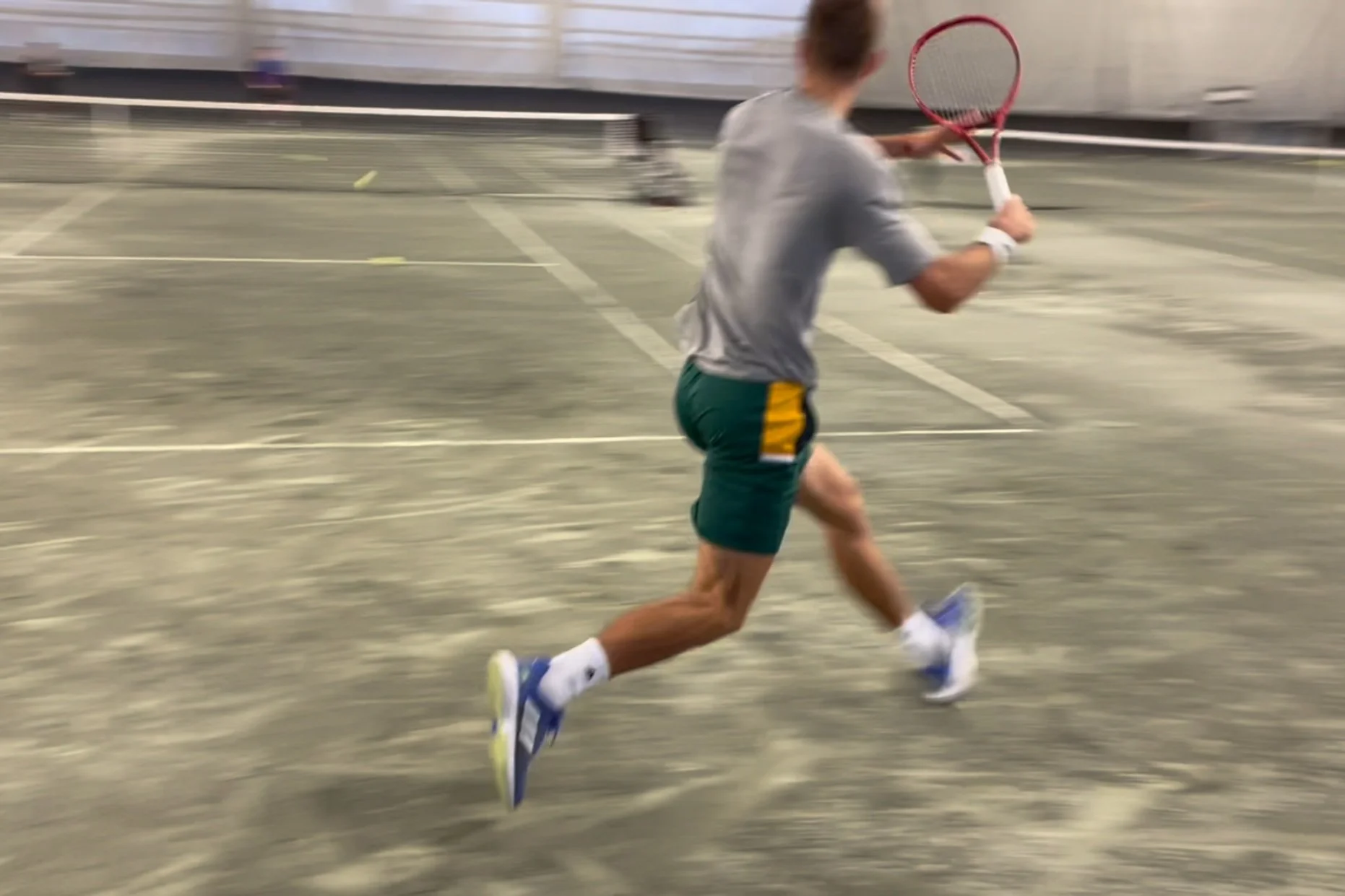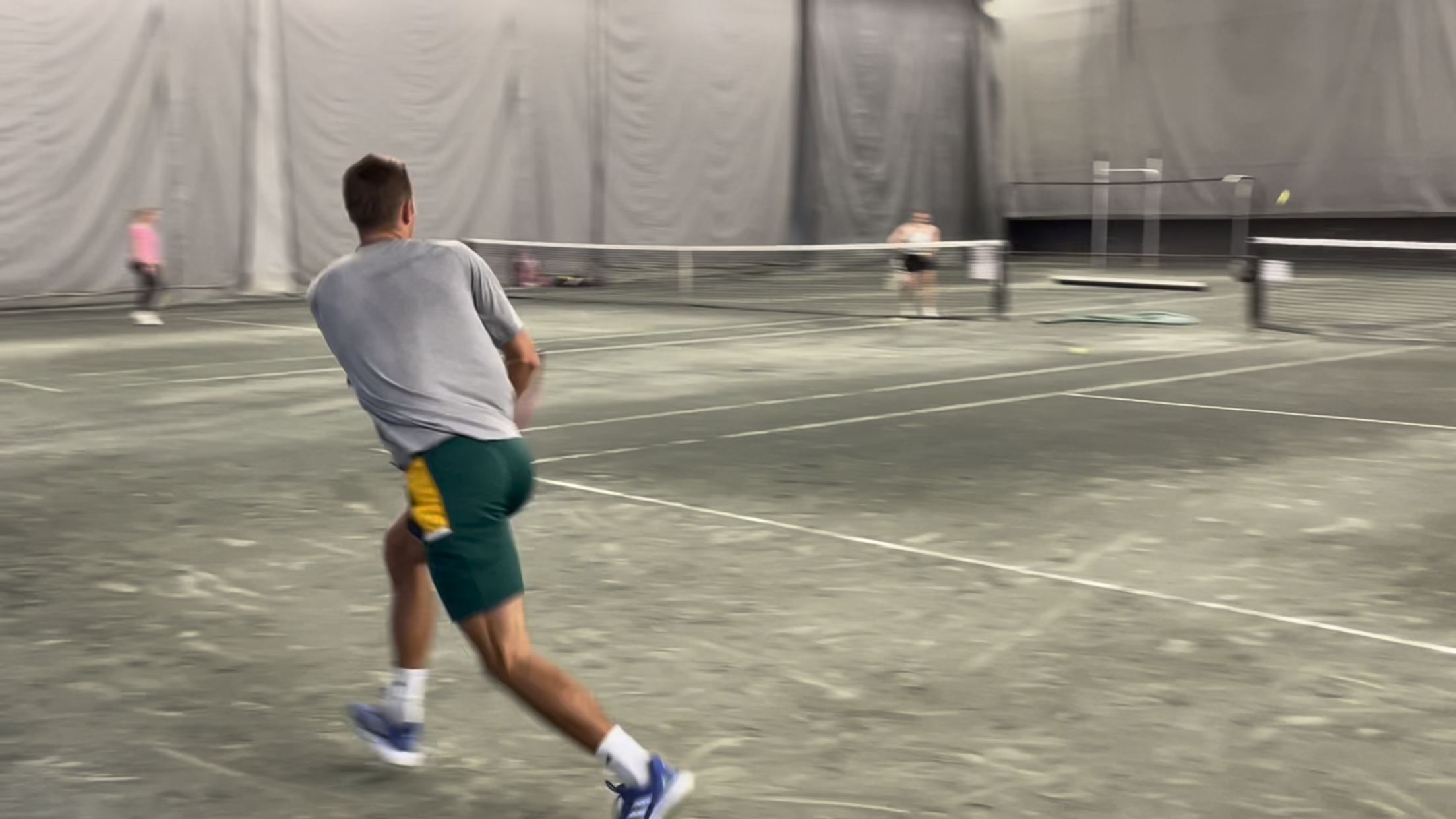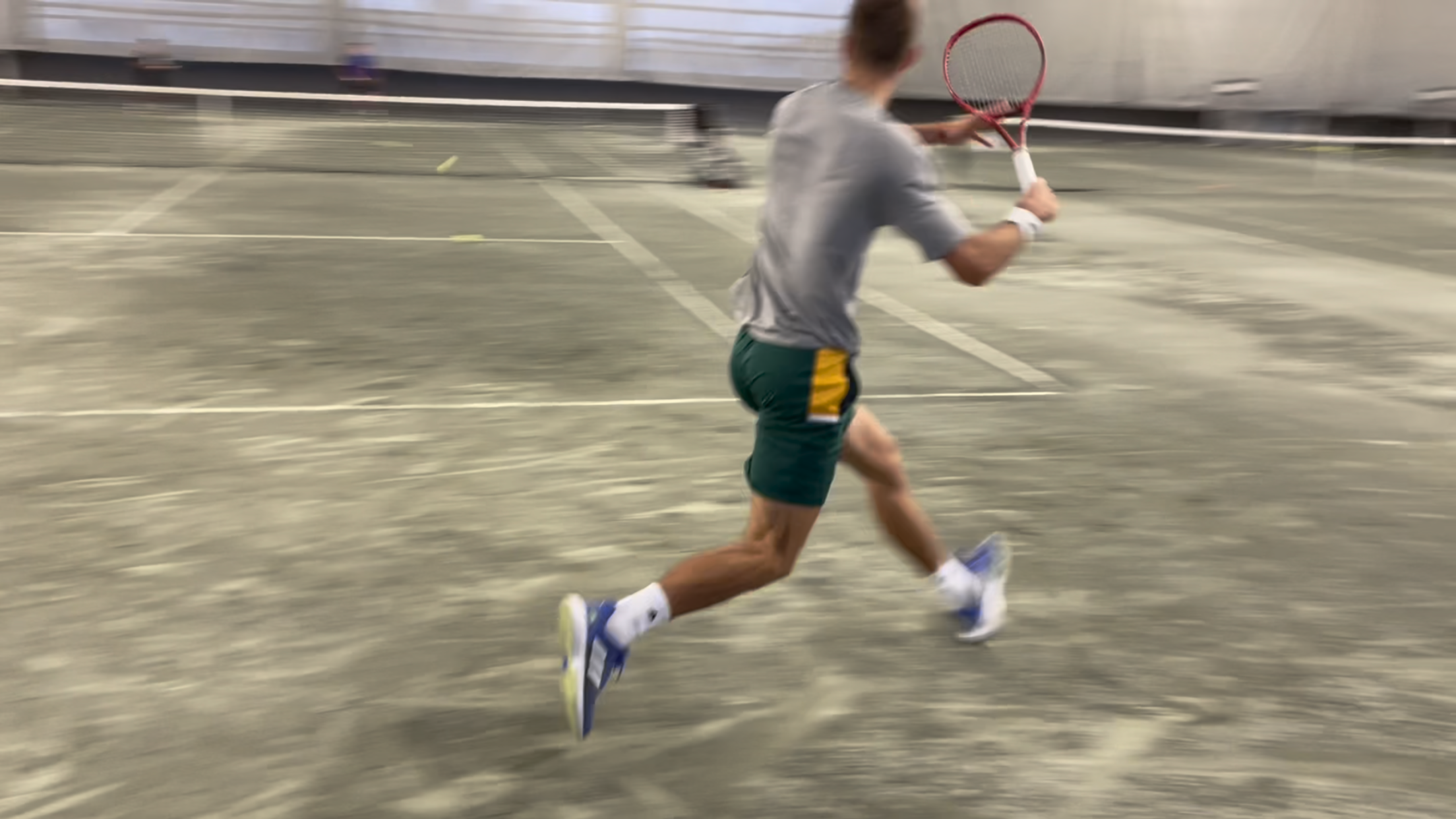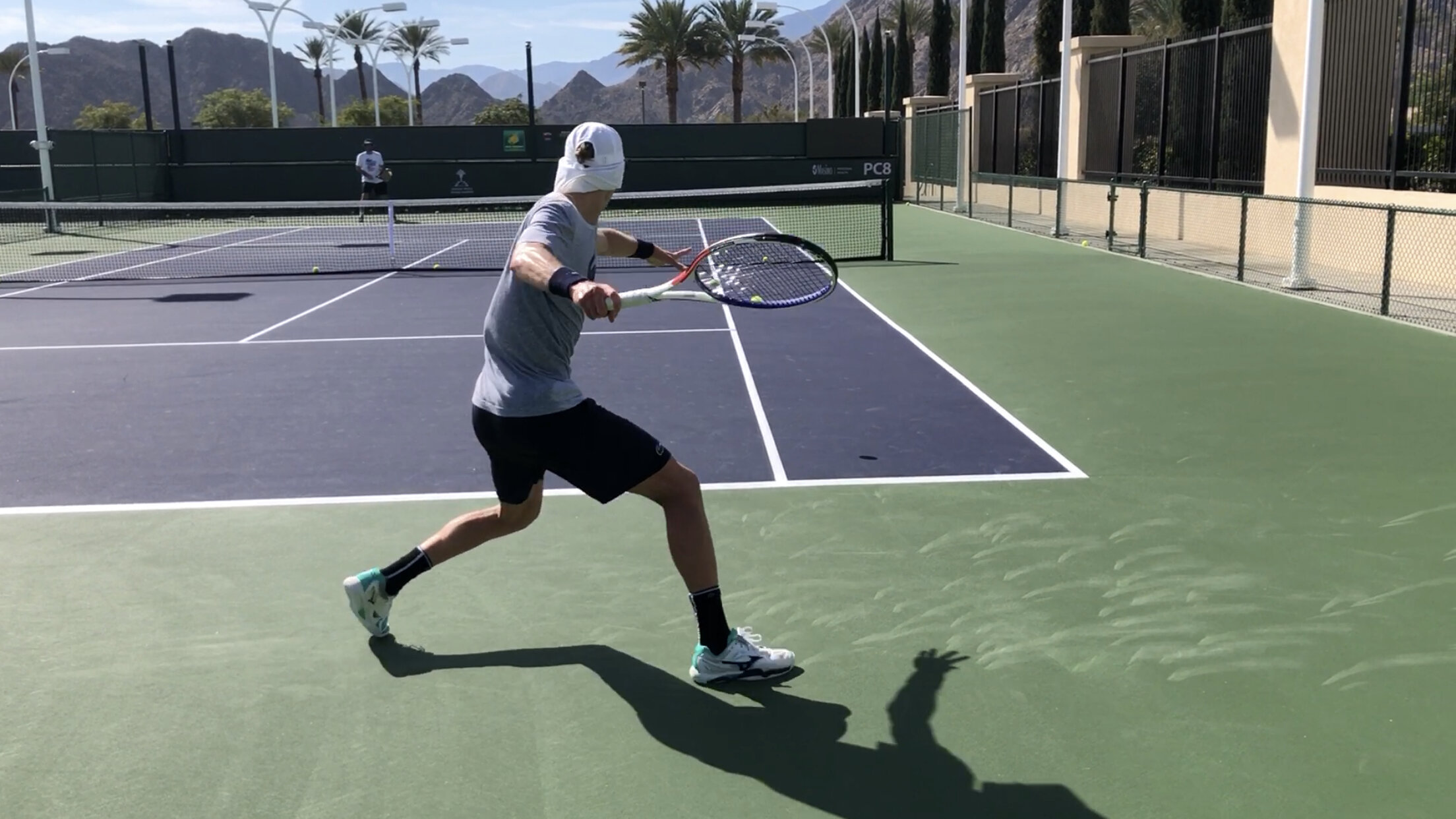Novak Djokovic is arguably the best tennis player of all time. It’s no secret he possesses an array of talents and skills. From his technique, to his mental toughness and everything in between.
His physical abilities aren’t too shabby either. Flexibility, stamina and movement are merely a few that come to mind.
While Novak is unquestionably a physical specimen, he’s not the fastest tennis player I’ve ever seen. It’s obvious he’s not the strongest. And I’d say he’s probably not one of the most powerful out there either.
I recently started working with a young 19 year old. As I always do when starting to coach a new player, I took him through some testing (both formal and informal). Part of this process is simply me asking players what type of training they’ve been doing of late, what they like doing and so on.
Funny enough, this player mentioned that explosiveness is a priority of his. That it’s something he feels has been lacking in his game - he came to the right place ;).
For the majority of tennis players, traditional ‘aerobic training’ is useless. That’s a pretty bold statement, I know. But hear me out.
In tennis, successful players need to be skillful. They must possess technical mastery across a number of strokes. They require a strategy. And tactics to implement said strategy.
Even though I have a bias towards being very prepared from a physical standpoint (as long time readers of Mattspoint would know), technique and tactics are still top priority.
Before we dive into this post, understand that playing tennis actually improves the stretch-shortening cycle (SSC). In essence, there are many ‘sister’ and ‘brother’ movements in tennis that utilize the SSC.
Back in 2017, I wrote an article about plyometric training. The aim of that post was to introduce plyos, outline the mechanisms at play and to showcase their relevance to tennis performance (from both a research and practical perspective).
That article was a good starting point. It highlighted the diversity that exists when we look at tennis movement...and how plyos, because of their versatility - ie. they can be performed in a multitude of directions, velocities, amplitudes etc - might very well be the most important ingredient when it comes to better on-court movement.
And in this post, I wanted to expand on these topics in more detail to add clarity to each.
First, here’s a bit of context. It’s been nearly 10 years since I began my master’s degree in sport science at the University of Edinburgh. It was 2010 and I was an eager young lad (as the scot’s would say).
Before then, I had a lot of ‘in the trenches’ experience - as a player and a coach. But going through a masters programme got me on the research train, and I’ve been on it ever since.
During the specific prep phase, as we’ve mentioned in previous sections, there is a greater emphasis on tennis play/practice - especially when compared with the general prep phase. Because of this, in my opinion, the need for conditioning work (in the traditional sense) is not as important - players, in effect, are getting a lot of their conditioning through tennis. Studies (Fernandez-Fernandez et al 2016, Kilit and Arslan 2018) are reaffirming this trend. See the ‘Learn More’ section for links to both studies.
I’ve previously written about the split step and it’s importance to successful movement - and ultimately, shot execution - in tennis. But do we truly understand what factors contribute to an effective split step? Why we should devote serious attention to it? Or even more, how to best train it?
Before we get into the details, you should know that there are 3 primary components that make up the split step:
By this point, I think we’re beyond prescribing tennis players to run long and slow (at least I hope we are). If you want to understand why this is the case, I urge you to read through this post, as I outline how the energy systems work and interact with one another.
Yet we still need players to be able to endure tough points, tight sets and long matches. No question about it. So how do we do this?
I’ve been asked countless times - from tennis coaches to players and even parents - 'how can I get more leg drive on my forehand?' 'Or more jump from the legs on my serve?' 'Or more explosiveness when moving laterally?' There’s no simple answer. It truly depends on a number of factors, including your strength levels, coordination, training age, biological age, training history, genetics and more. But if I absolutely had to boil my answer down to one form of training, I’d have to look towards plyometrics.
There are many terms to describe plyometrics including plyometric training, plyos, jump training, shock training (that’s what Soviets used to call it) & ballistic training. I may use some of these terms interchangeably throughout this article but they all refer to plyometrics. Whatever you call it, it’s general premise is to increase power output.
Last week I presented in front of the BTV (Bavarian Tennis Verband) - it’s one of the biggest associations in Germany and many of the top junior tennis coaches were in attendance. The topic - how we can use off-court training strategies to accelerate on-court development. I had 3 young junior players helping me during the practical component - going through a series of jumps, bounds, throws, bodyweight exercises and so on. They were 12-13 years old and apparently, some of the best young talents in the country (I never met them previously and had never seen them play or train).
While there was a lot of positive feedback from last week’s post on blocked vs. random practice, there was also a bit of confusion. I suppose the term ‘random’ can be a bit misleading. To clear the air, this week’s post will attempt to clarify the supposed dichotomy between blocked and random practice and offer a slightly different perspective to the argument. Furthermore, there are 2 other forms of practice - called ‘variable practice’ and ‘constant practice’, which can be influenced by both block and random approaches. Lastly, several examples of each practice type will be offered and described, along with the 'why' behind their use.
Most tennis players spend hours on the practice courts. And for good reason - tennis is darn tough. The question is, are these hours on court productive hours or redundant? How can we know? To assess whether our training is effective (and that it'll transfer to matchplay) we must first understand the demands of elite tennis.
In this post, we’ll review a study by Pereira et al (2016) that dives into the movement details of professional tennis. Other studies have previously analyzed movement characteristics; but, those studies replaced tournament matches with simulated matchplay. The present study observed movement characteristics via official ITF sanctioned matches.
Many of you have probably heard of the acronym SAQ before. If not, it’s referred to as speed, agility & quickness. Coaches & trainers from a variety of sports use these terms liberally and interchangeably. This is a problem. In the tennis world, many believe that these 3 qualities are supremely important for the movement success of an elite player. Another problem. When referring to speed, are we referring to maximum speed? Or something else? In tennis, as we’ll see later in this post, a player almost NEVER reaches top running speeds. Is it relevant then? Quickness, on the other hand, has multiple issues. First, what does it even mean? Does it mean being explosive? Does it deal with having fast feet (which is a misleading term in itself). Prominent researchers disregard quickness as a sport science term anyway - their reasoning...it’s too vague.
When I was a teenager, I left home to train at a tennis academy - about 2 hours away from my family. I grew up in a small city where there was 1 outdoor tennis club and no indoor tennis - which is why I made the move. Growing up and playing at a small club, with no junior program, you tend to get friendly with older adult members. Most of my practice partners were over 35 with many above the age of 50. When I told them I was leaving, they said one thing that stuck with me until this very day - “hopefully they build on the game you have, rather than changing all of your strokes at once”.
I’m constantly trying to bridge the gap between how players should train off the tennis court and how they should train on the tennis court. It’s important to look at on-court tennis training through a physical lens as much as a technical or tactical one as these qualities are all interrelated. Let's look at an example to illustrate this point. Say you're working on retrieving tough wide balls on the backhand side. Not only is technique targeted (attempting to refine open stance backhands, for example), tactics (being able to send the ball back high/deep and with plenty of spin for example) along with the specific movement qualities (explosiveness, acceleration, deceleration) are also being trained. As you can see, it’s very difficult to separate one quality from another as they are all in some way related.
Last week I wrote about some key lessons I learned from a weightlifting coach. One of those key lessons was the importance of general training for athletes. Although general training is vital for any athlete, developing athletes may get the greatest benefit from this type of work. When I talk about general training, I am referring to non sport specific movements. For tennis players, this means movements that are non tennis related. John Kiely, sport scientist and elite coach, refers to general training, especially in the early years of development, as movement diversity. In this article, we’ll explore the current dogma in physical preparation for tennis, why early specialization is an almost must and the theory behind general training.
This post will touch on one of the most important qualities for a tennis player - reactive ability. Being reactive will help any tennis player be set for more shots and run down tougher balls without having to run any faster than they already do. Now before I get into the nitty gritty details I think it’s important to distinguish between reactive ability and reaction time (no they are not the same thing...although also not mutually exclusive).



















